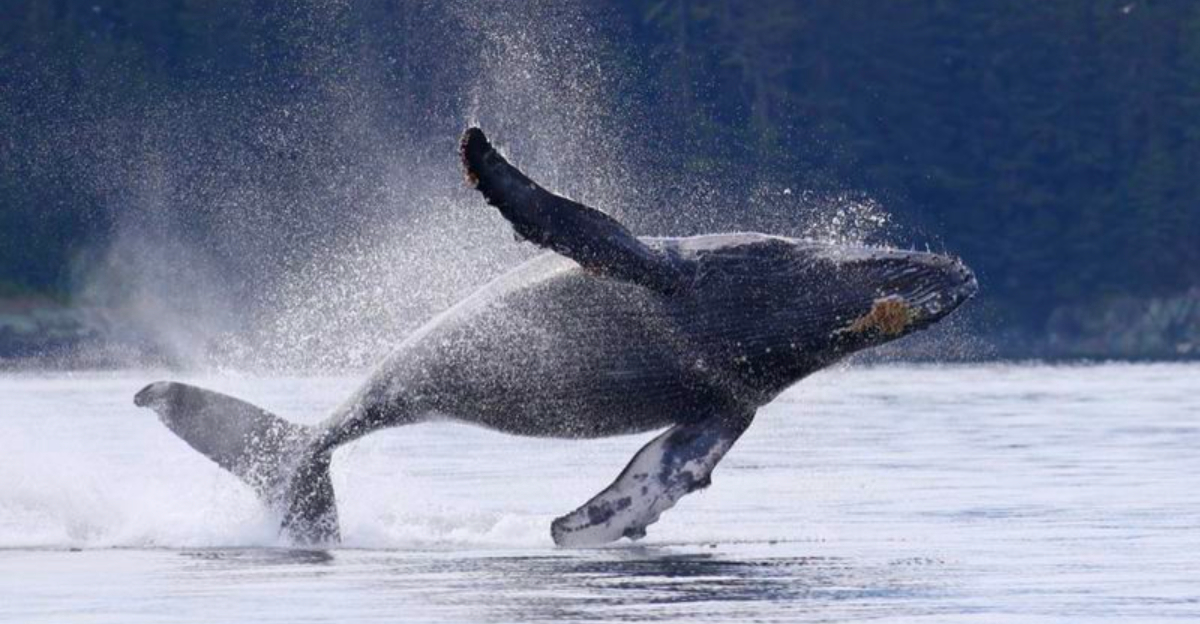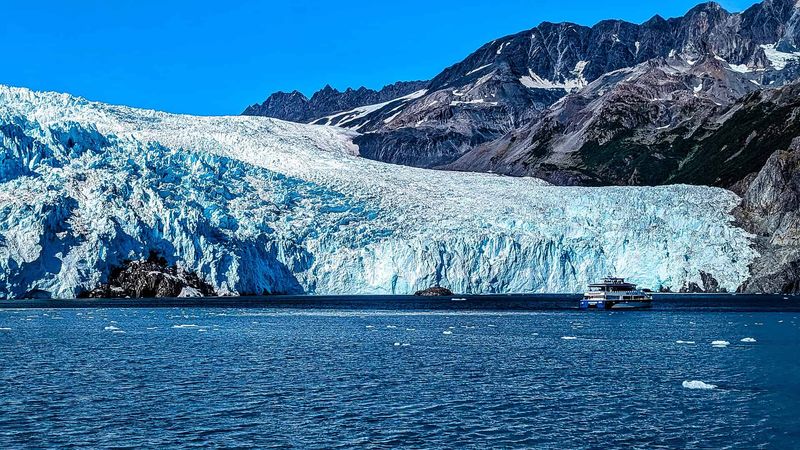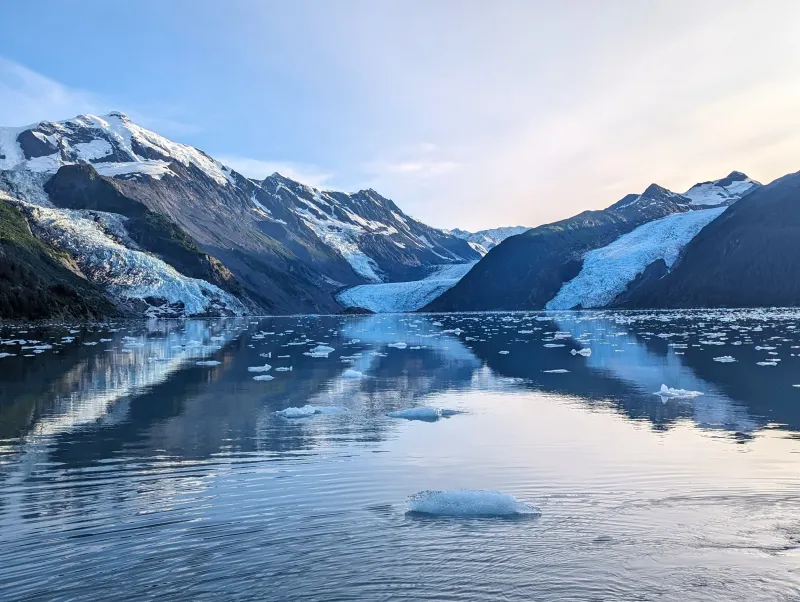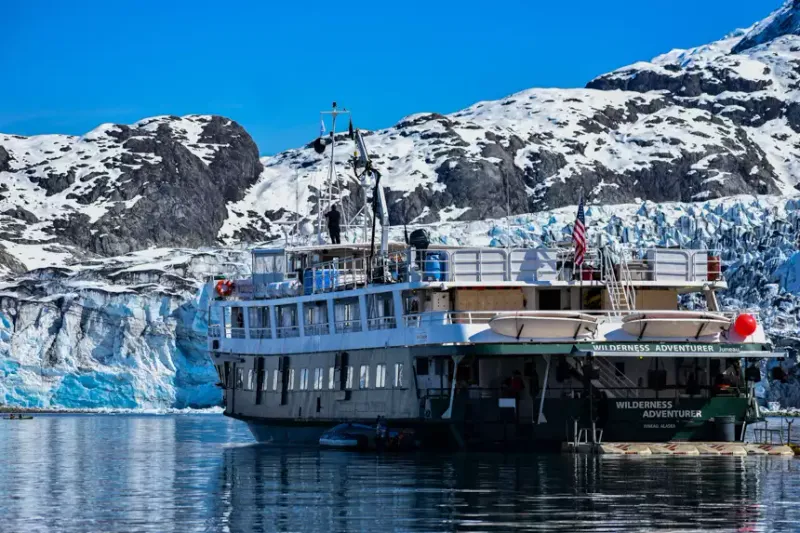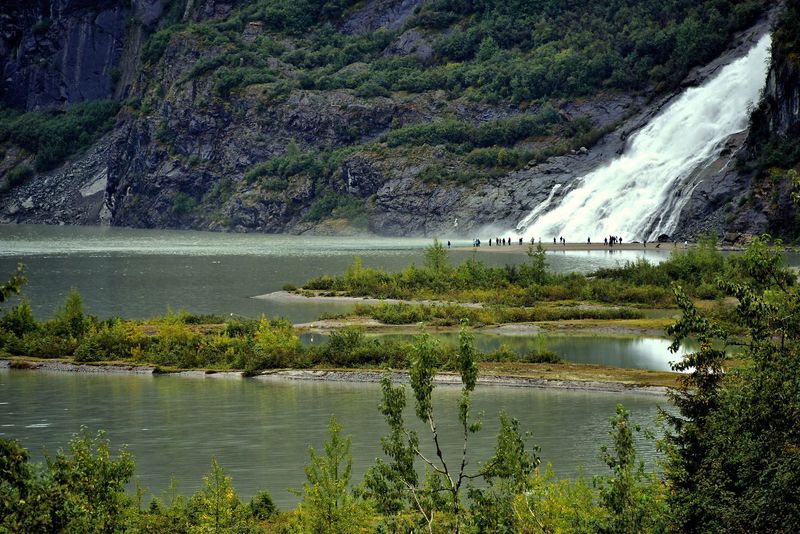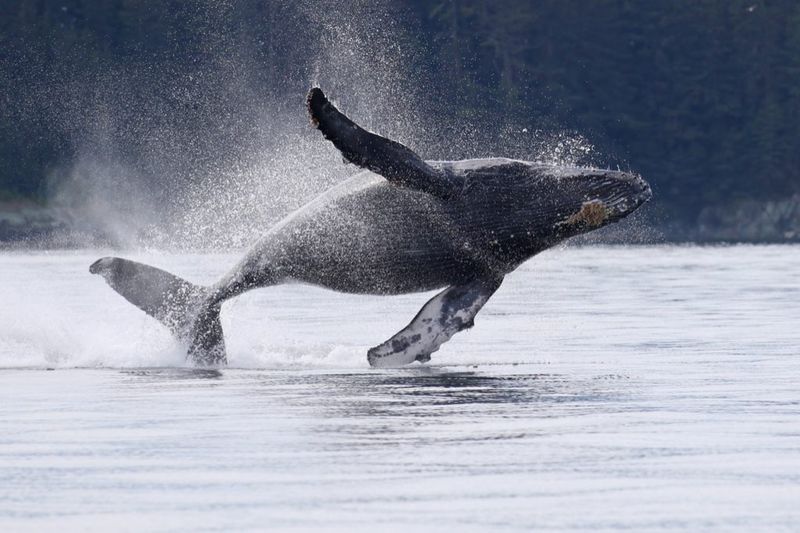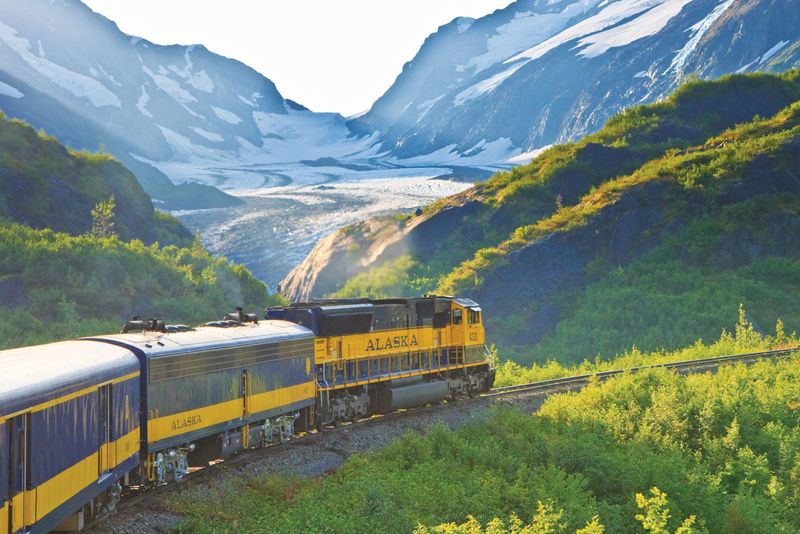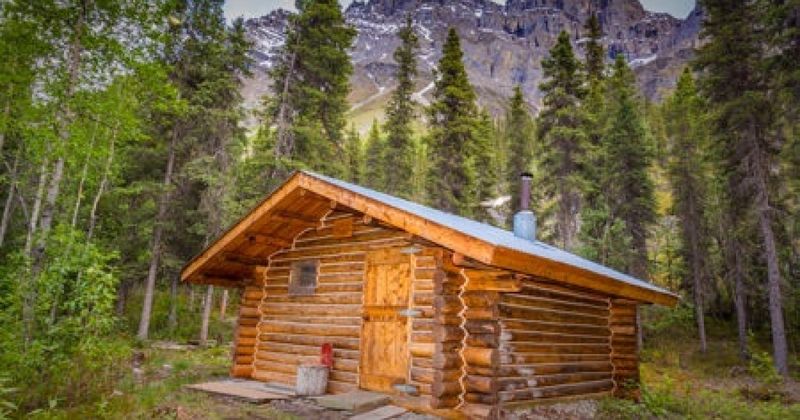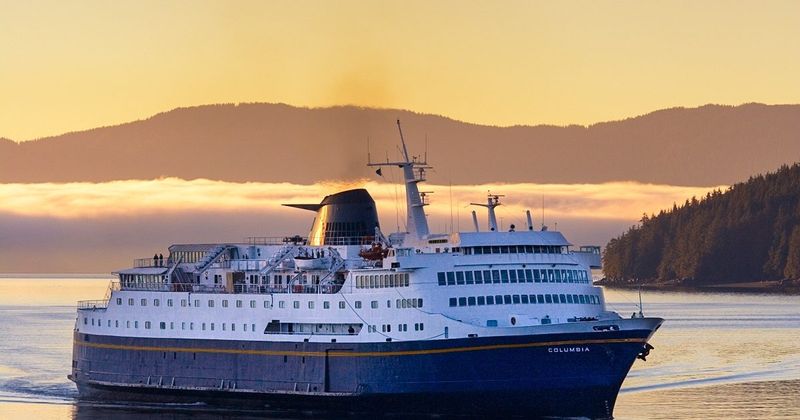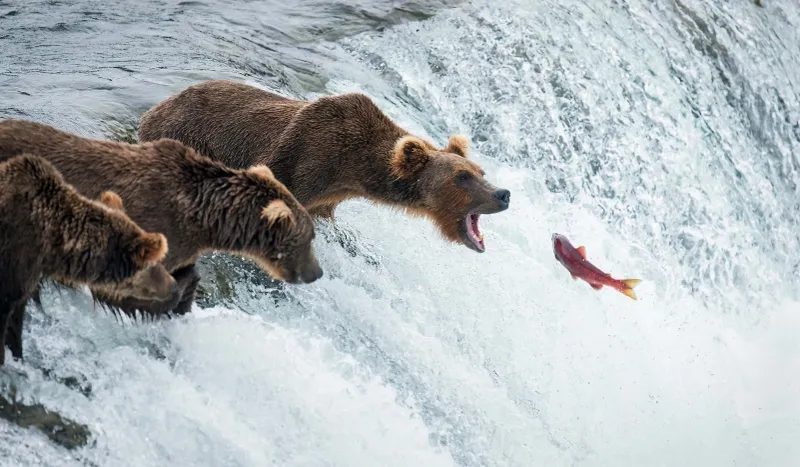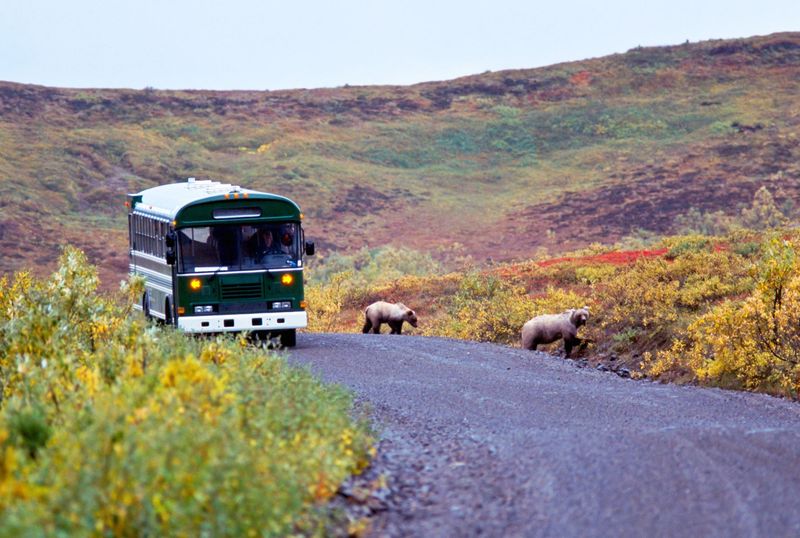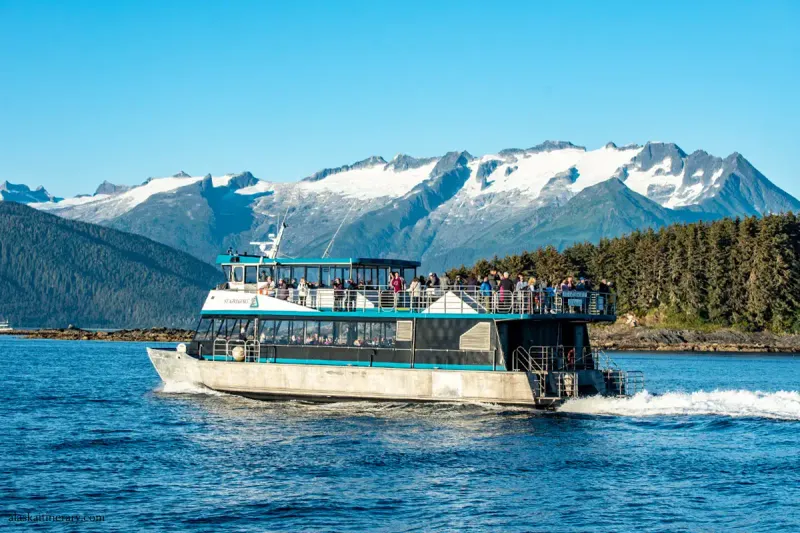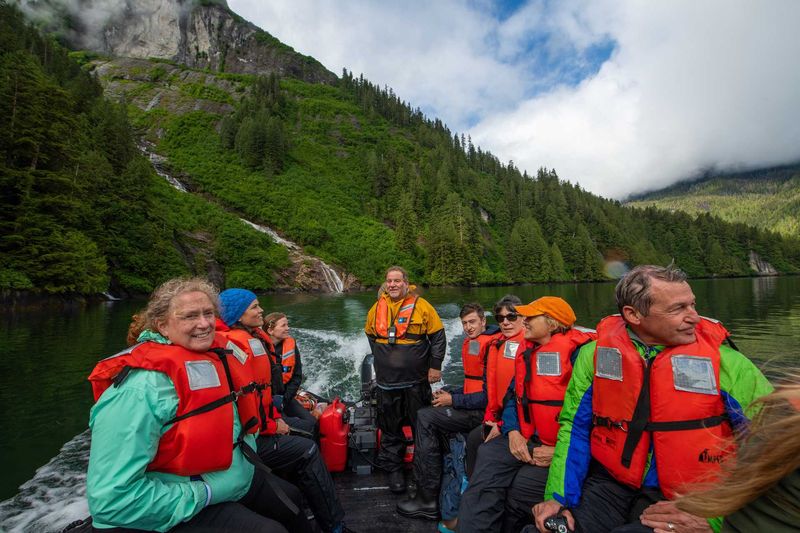Alaska might seem overwhelming at first—endless wilderness, towering glaciers, and wildlife encounters that belong on a bucket list. But planning an unforgettable Alaskan adventure doesn’t have to be complicated. From watching humpback whales breach in icy waters to standing face-to-face with calving tidewater glaciers, the Last Frontier offers experiences that will stick with you forever. This guide breaks down the essentials into twelve simple, actionable tips to help you make the most of your Alaska journey.
1. Your first tidewater glacier: Kenai Fjords (from Seward)
Seward’s small boat harbor serves as your gateway to one of Alaska’s most spectacular natural theaters. Kenai Fjords National Park delivers everything you’ve dreamed about: massive ice walls cracking and crashing into the sea, curious sea otters floating on their backs, and colorful puffins perched on dramatic sea stacks.
Daily summer cruises make this accessible even for first-time visitors. Whales frequently make guest appearances, surfacing alongside your vessel as you navigate through fjords carved by ancient ice.
Booking ahead is essential during peak season—these tours fill up fast. The experience combines geology, wildlife, and raw Alaskan beauty into a single unforgettable day on the water.
2. Calm-water ice fields: Prince William Sound (from Whittier)
Prince William Sound offers a gentler alternative to open-ocean crossings, perfect if you’re prone to seasickness or traveling with young children.
Waterfalls tumble from cliffsides in every direction, creating a soundtrack of rushing water. Half-day and full-day departures from Whittier—just an hour from Anchorage through a mountain tunnel—make this an easy add-on to your itinerary.
Many cruises include on-board National Park Service rangers who share fascinating stories about the sound’s ecology and history. The protected waters mean steadier footing and better photo opportunities as you approach massive walls of ancient blue ice.
3. Bucket list: Glacier Bay day boat (from Gustavus/Bartlett Cove)
Some places earn their reputation for good reason. Glacier Bay represents Alaska at its most pristine and dramatic, a UNESCO World Heritage Site where ice meets ocean in spectacular fashion.
A full-day catamaran journey departs Bartlett Cove each summer morning, carrying you deep into a bay that was completely covered by ice just 250 years ago. Park Service naturalists ride along, helping spot bears on distant shores and explaining the bay’s remarkable glacial retreat.
Wildlife sightings here feel almost guaranteed—humpback whales, sea lions, harbor seals, and mountain goats all call this wilderness home. The remoteness adds to the magic; reaching Gustavus requires a short flight or ferry ride.
4. Iconic & easy: Mendenhall Glacier + Nugget Falls (Juneau)
Not all glacier experiences require boat rides or bush planes. Just minutes from downtown Juneau, Mendenhall Glacier provides an accessible introduction to Alaska’s frozen giants without the hefty price tag.
The US Forest Service visitor center features exhibits explaining glacial formation and retreat, while picture windows frame the glacier itself. Short, well-maintained trails lead to Nugget Falls, where water thunders down beside the ice.
Salmon streams near the trails attract black bears during summer runs, offering wildlife viewing opportunities right alongside the path. Cruise ship passengers often visit here, so arriving early in the morning or later in the afternoon helps you avoid the biggest crowds and capture better photographs.
5. Guaranteed thrills: Juneau whale-watching (May–Sept)
Few wildlife encounters match the moment a 40-ton humpback whale launches itself completely out of the water. Juneau’s cold, nutrient-rich waters create a summer buffet for these giants, making sightings remarkably reliable from May through September.
Multiple operators run daily departures, and many combine whale-watching with a stop at Mendenhall Glacier for a two-for-one experience. Occasional orca pods add extra excitement to the mix.
Captains communicate with each other by radio, sharing whale locations to maximize your chances. Bring layers—even summer days turn chilly on the water—and keep your camera ready. These whales love to show off with tail slaps, spy hops, and spectacular breaches.
6. Ride the rails to the boat: Alaska Railroad day trips
Why stress about driving unfamiliar highways when the journey itself can be half the adventure? Alaska Railroad’s summer routes turn transportation into a highlight, with glass-domed observation cars framing mountain peaks and coastal views.
The Coastal Classic connects Anchorage to Seward, perfectly timed to catch morning glacier cruises. The Glacier Discovery route runs to Whittier, hugging Turnagain Arm before diving through mountain tunnels.
Both routes let you skip rental car logistics while enjoying scenery that’s often inaccessible by road. Onboard commentary points out wildlife, historic sites, and geological features. The schedules align beautifully with Kenai Fjords and Prince William Sound departure times, making multi-day planning surprisingly simple.
7. Cozy (and affordable) cabins: public-use gems
Forget expensive lodges—Alaska’s best-kept secret might be its network of simple, affordable public-use cabins tucked into wilderness locations. Alaska State Parks and the US Forest Service maintain these beloved shelters at lakeshores, rainforest inlets, and mountain valleys.
Most feature basic bunks, a woodstove, and stunning views, with no electricity or running water. Some require short hikes to reach, while others need boat or floatplane access, adding to the adventure.
Nightly rates run surprisingly low, but peak-season reservations fill months ahead. These cabins offer a genuine Alaskan experience—waking to loon calls, watching for bears from your porch, and sleeping under the midnight sun in true wilderness solitude.
8. Ferries as a front-row seat: Alaska Marine Highway
Cruise ships aren’t the only way to experience Alaska’s legendary Inside Passage. State ferries offer a budget-friendly alternative that lets you craft your own itinerary, hopping between coastal towns at your own pace.
The Alaska Marine Highway system welcomes both walk-on passengers and vehicles, functioning as a floating highway that connects communities from Bellingham, Washington, to Dutch Harbor in the Aleutians. Onboard amenities stay simple—cafeterias, observation decks, and sleeping quarters—but the scenery rivals any luxury cruise.
Flexibility is the biggest advantage. Spend a few days in Sitka, catch the next ferry to Juneau, then continue north. Always check current routes and schedules before planning, as service changes seasonally.
9. Bear viewing 101: Brooks Falls, Katmai (peak July)
Brooks Falls has earned iconic status for good reason—where else can you watch dozens of massive brown bears fishing for salmon from safe, elevated platforms? Peak season in July brings both the largest salmon runs and the highest bear concentrations.
Day trips by floatplane depart from Anchorage, Homer, and King Salmon, though space stays extremely limited during peak weeks. Reservations and permits require advance planning, sometimes months ahead.
The experience delivers exactly what you’ve seen in nature documentaries: bears standing in rushing water, salmon leaping upstream, and the occasional mid-air catch. Rangers provide context and ensure visitor safety. July offers the most dramatic action, but September brings different salmon species and fewer crowds.
10. Denali expectations: road access is limited beyond mile ~43
Setting realistic expectations helps avoid disappointment. A long-running landslide at Pretty Rocks has blocked vehicle access beyond roughly mile 43 since 2021, cutting off popular destinations like Eielson Visitor Center and Wonder Lake.
Bus tours still operate on the open section, offering excellent wildlife viewing and tundra landscapes. Always check current Park Road status before finalizing your plans—conditions and access change as engineers work on solutions.
Denali remains spectacular despite the limitations. The first 43 miles deliver plenty of opportunities to spot grizzlies, caribou, Dall sheep, and moose against a backdrop of tundra and mountains. Just know that iconic deep-park vistas require different approaches now, like flightseeing tours.
11. When to go (for first timers)
Timing can make or break your Alaska adventure. Mid-May through mid-September represents the sweet spot when everything aligns: long daylight hours, open tour operations, active wildlife, and accessible cabins and cruises.
Whale-watching reliability peaks from June through August, while bear viewing at Brooks Falls hits its stride in July. Mid-summer brings the biggest crowds and highest prices, along with near-constant daylight.
Shoulder seasons offer trade-offs—late May and early September mean fewer tourists and lower costs, but some tours run limited schedules. First-time visitors usually fare best in the June-to-August window when all activities operate at full capacity and weather stays most cooperative for outdoor adventures.
12. Smart packing & safety notes
Weather near glaciers and on boats shifts faster than you’d expect. Layering beats bulk—a base layer, fleece, and waterproof shell handle most conditions. Rain gear isn’t optional; it’s essential equipment for any boat trip or coastal hike.
Mosquitoes peak from mid-June through late July, especially near lakes and wetlands. Pack repellent and long sleeves to stay comfortable during evening hours.
In recent summers, glacial outburst floods from Suicide Basin have raised Mendenhall Lake and River levels rapidly, creating dangerous conditions. Stay alert to local advisories in Juneau. Always check current conditions before heading out—Alaska’s wilderness demands respect, preparation, and a healthy dose of flexibility.
